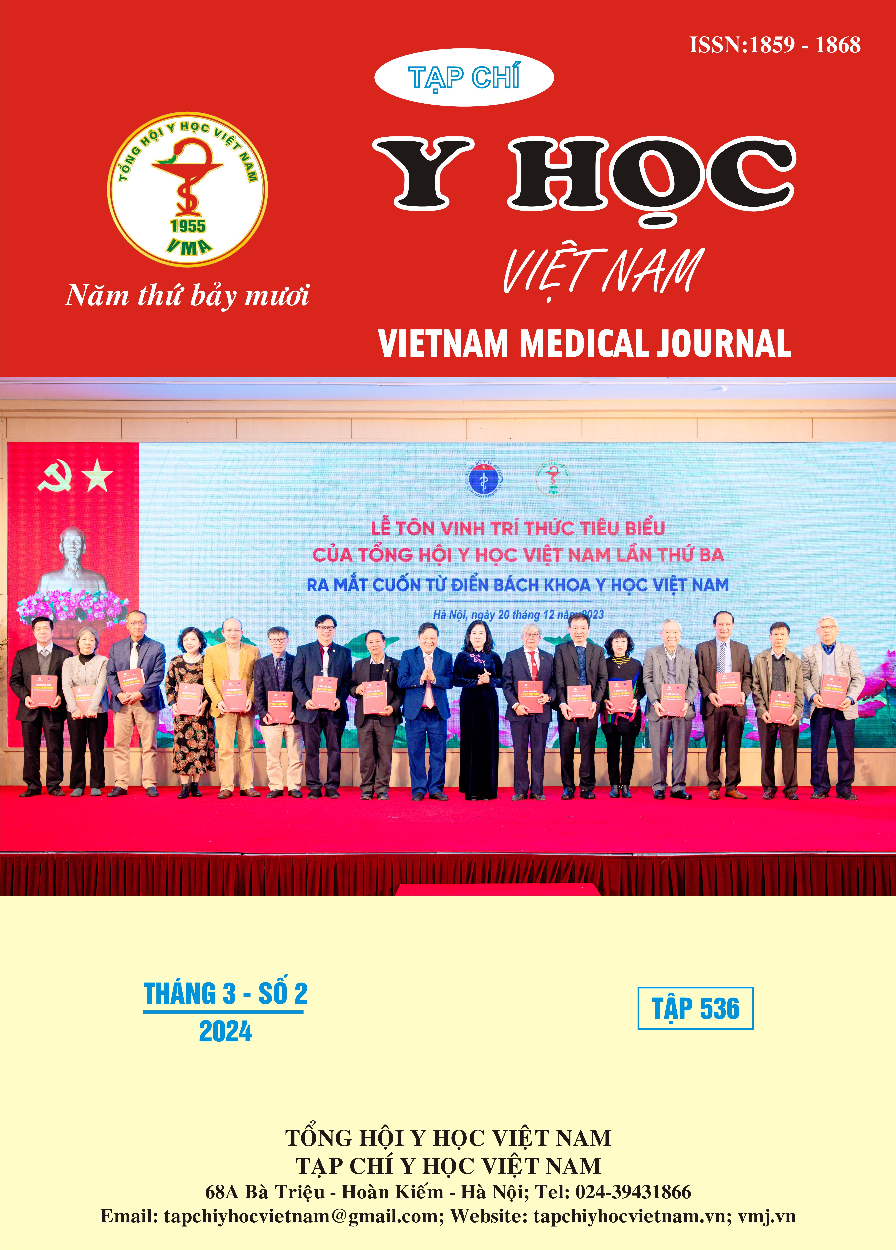EFICACY OF NEOADJUVANT 4AC- 4TH REGIMEN IN STAGE III BREAST CANCER PATIENTS AT HANOI ONCOLOGY HOSPITAL
Main Article Content
Abstract
Objectives: Our study aims to describe the clinical and paraclinical characteristics of stage III breast cancer patients and evaluate the treatment outcomes and toxicity of neoadjuvant 4AC- 4TH regimen in this group. Patients and Methods: Retrospective, descriptive sudy on 51 patients with stage III breast cancer, were treated with neoadjuvant 4AC – 4TH regimen at Ha Noi Onconlogy Hospital. Results: The mean age was 51,7. The proportion of stage IIIA, IIIB, IIIC is 39,2%, 35,3% and 25,5%, respectively . 92,2% patients histoloy was invasive carrcinoma of no special type (NST) and 70,6% was in grade II. After treatment, the complete clinical response was 15,7% after 8 cycles of 4AC- 4TH. All of our patients was moved to modified radical mastectomy after neoadjuvant chemotheraphy. The pathological complete response (pCR) was 43,1%. Most adverse events were manageable and tolerable. The most common toxicity was amenia, leukopenia, neutropenia, mainly at grade 1-2. The proportion of neutropenia at levels 3 and 4 over the total number of chemical cycles is 4.9% and 0.2%, respectively. Non hematological toxicities such as vomiting, fatigue, stomatitis and alopecia were also common and all of them were mild and moderate. Conclusion: 4AC- 4TH regimen in neoadjuvant setting gives a high pCR rate with tolerable toxicity, therefore this regimen can be widely used as neoadjuvant chemotheraphy prior to surgery with Her-2 positive breast cancer in our country, specilly with inoperable stage at initial diagnosis.
Article Details
References
2. Eisenhauer EA, Therasse P, Bogaerts J, et al. New response evaluation criteria in solid tumours: revised RECIST guideline (version 1.1). Eur J Cancer. 2009; 45(2): 228-247. doi: 10.1016/j.ejca. 2008.10.026
3. Guarneri V, Broglio K, Kau SW, et al. Prognostic value of pathologic complete response after primary chemotherapy in relation to hormone receptor status and other factors. J Clin Oncol. 2006;24(7): 1037-1044. doi: 10.1200/JCO. 2005.02.6914
4. Freites-Martinez A, Santana N, Arias-Santiago S, Viera A. Using the Common Terminology Criteria for Adverse Events (CTCAE - Version 5.0) to Evaluate the Severity of Adverse Events of Anticancer Therapies. Actas Dermosifiliogr (Engl Ed). 2021; 112(1): 90-92. doi:10.1016/j.ad.2019.05.009
5. Nguyễn Thị Thủy. Đánh Giá Kết Quả Hóa Trị Bổ Trợ Trước Phác Đồ 4AC-4T Trên Bệnh Nhân Ung Thư vú Giai Đoạn III. Luận văn Thạc sỹ y học, Trường Đại học Y Hà Nội; 2016.
6. Vriens BEPJ, Vriens IJH, Aarts MJB, et al. Improved survival for sequentially as opposed to concurrently delivered neoadjuvant chemotherapy in non-metastatic breast cancer. Breast Cancer Res Treat. 2017;165(3): 593-600. doi:10.1007/ s10549-017-4364-8
7. Hà Thành Kiên. Đánh Giá Kết Quả Hóa Trị Bổ Trợ Trước Phẫu Thuật Phác Đồ 4AC-4T Liều Dày Trên Bệnh Nhân Ung Thư vú Tại Bệnh Viện K. Luận văn Thạc sỹ y học, Trường Đại học Y Hà Nội; 2018.
8. Đoàn NH, Trịnh LH. kết quả điều trị hóa chất bổ trợ trước phẫu thuật phác đồ 4ac-4t liều dày bệnh ung thư vú tại bệnh viện đại học y hà nội. VMJ. 2022;519(1). doi:10.51298/vmj.v519i1.3538


